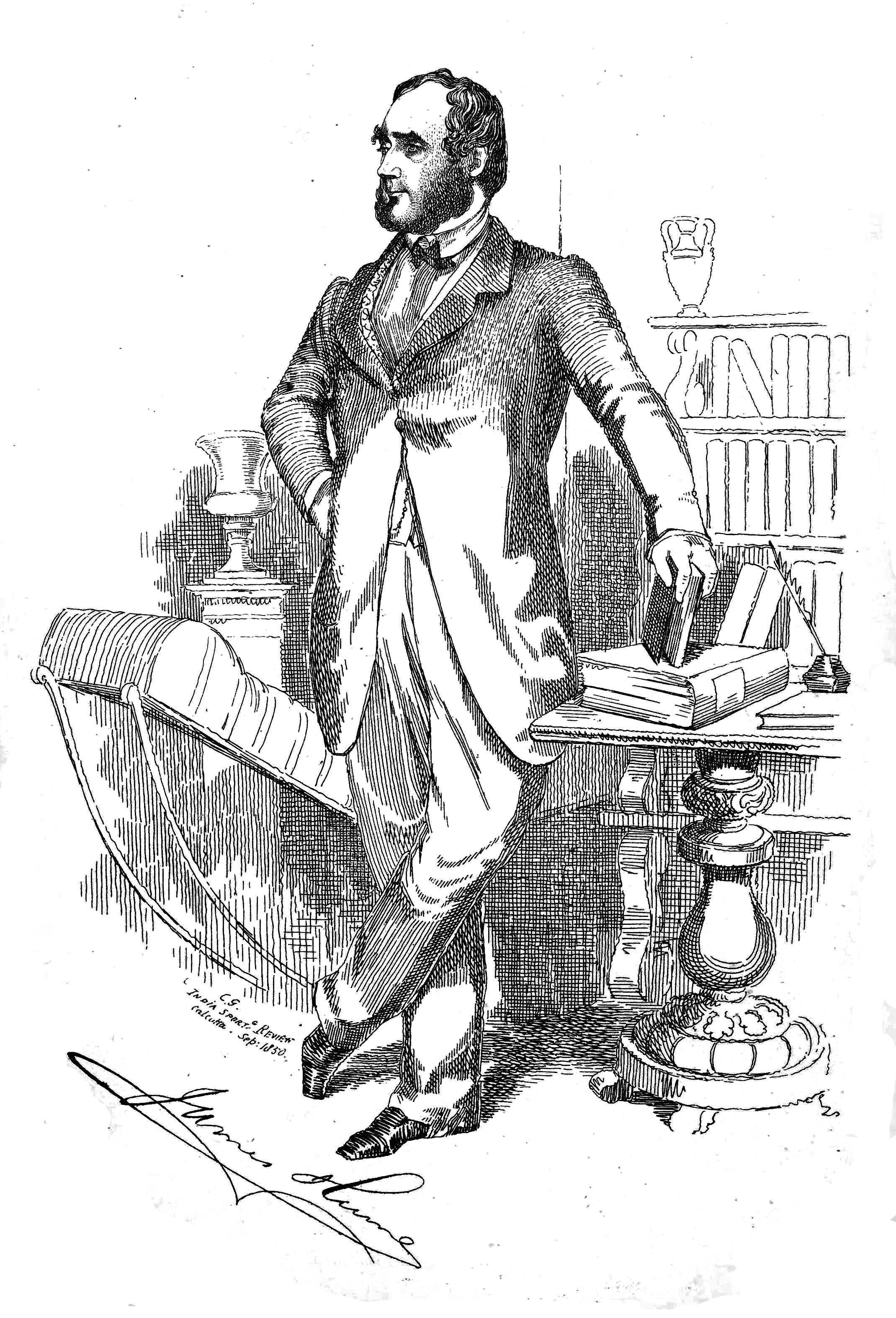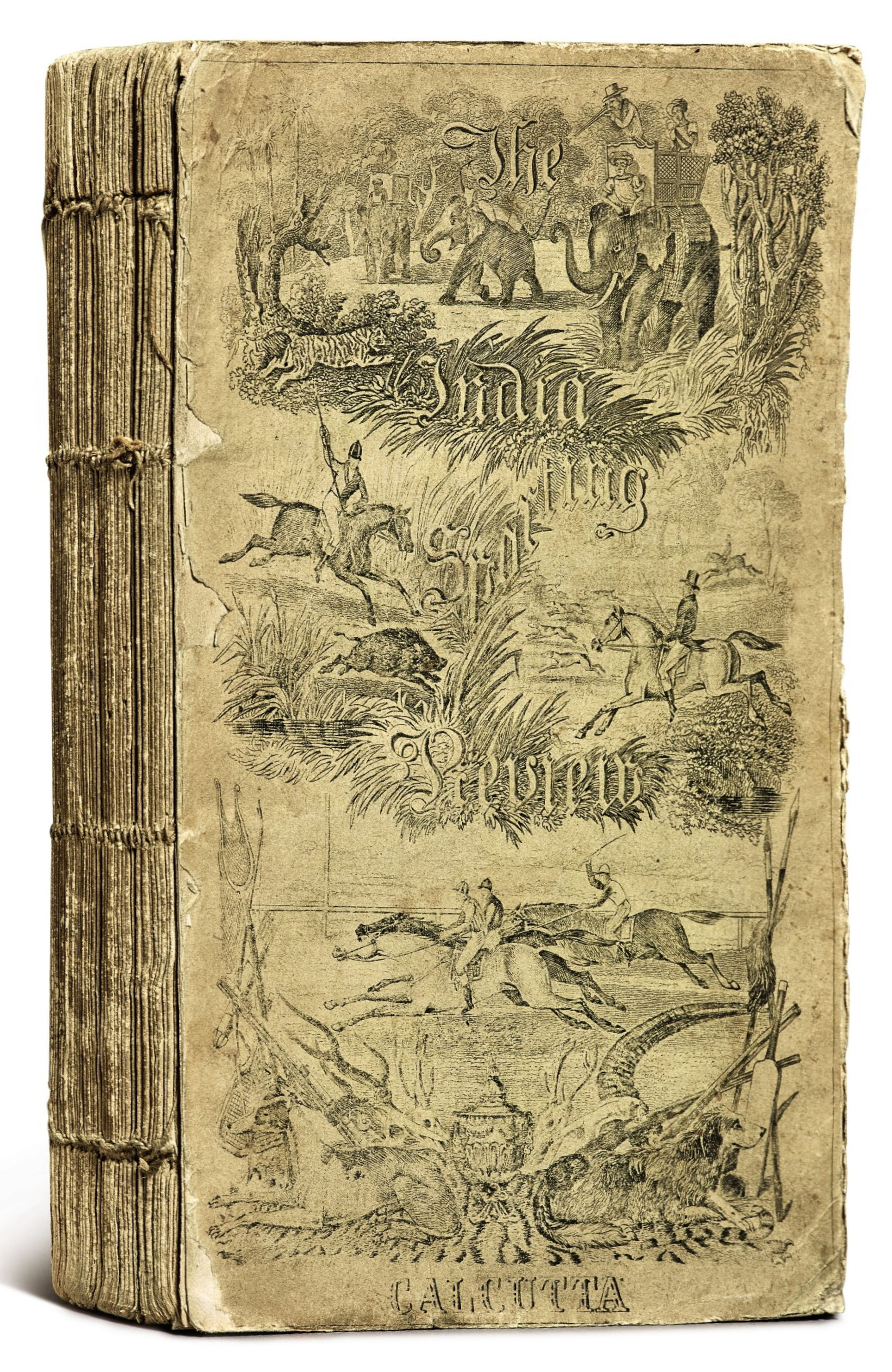Early colonial Indian shikar literature is filled with authors hiding behind pseudonyms like "Civilian", "Mountaineer", "Hawkeye", "Silver hackle", "Felix", or "Maori", and I have often wondered whether this was more than just fashion. Perhaps the authors truly wanted to keep their whereabouts private lest their employers or others find fault with them. At least in the case of "Mountaineer", there seems to have been a real need for staying low. I was surprised to find that there are at least two major biographies of "Mountaineer" which I think do not deal sufficiently with his life in the Indian wilderness and are easily missed if one does not make the connection between Frederick "Pahari" Wilson and Shikari Wilson alias Mountaineer.
 |
| James Hume, A. O. Hume's cousin, sketched by the Calcutta artist and animal rights pioneer Colesworthey Grant |
Frederick Wilson left life in the East India Company army and went AWOL, supposedly with just five rupees and his brown bess, to hide away in the Himalayas, well before the 1857 uprising. It would appear that he made himself useful during 1857 and received a pardon after which he moved back into the company of his own countrymen. Much of the romanticism associated with him is for his having gone native and styling himself the Raja of Harsil. Wilson made money by denuding the Himalayan forests, cutting down old growth forests and floating timber down the rivers, setting up sawmills in the lower valleys and selling them off to feed the voracious appetite of the early railways. He shot wildlife freely and wrote about his exploits under the pen-name "Mountaineer" - the largest output being to the India Sporting Review - now a very hard-to-find periodical. This magazine was edited by James Hume, a magistrate in Calcutta, with whom the young Allan O. Hume stayed when he first arrived in India in 1849. Now the historian S. R. Mehrotra who passed away a few years ago noted that it was with his Calcutta cousin that he saw the first protest of the Europeans against changing laws. And his cousin James was among the few who did not support the Europeans. (I am unable to see the historical context of the so-called white mutiny of 1849 that Mehrotra refers to) Shikari Wilson was clearly a close friend of James Hume and still later Allan as well. Wilson is said to have shot 1000 to 1500 male monals a year for the sale of their plumage during the height of the plume trade. Brooks travelled along the Bhagirathi river valley in 1875 and noted that monal populations could recover now that Wilson had left them alone! Brooks also recorded the price paid for a monal - Rupees 2 and 8 annas.
 |
| The India Sporting Review A work that ought to be digitized for posterity |
Attempts to get the Biodiversity Heritage Library to locate a set of the India Sporting Review have all failed. It is however claimed by cricket historian Boria Majumdar that he has a complete set of the India Sporting Review as part of the Fannatic Sports Museum. It would be amazing indeed if this set could be digitized for wider research access. Then perhaps we will all be able to read more of Mountaineer Wilson.
 |
| Frederick "Pahadi" Wilson's bungalow in Harsil which burned down in 1997 The figures in the foreground are Wilson and his brother-in-law Mungetu Chand. |
Journalist Robert Hutchinson wrote book on Wilson after hearing about him from Sundarlal Bahuguna and D.C. Kala wrote another book on Hulson Sahib. Jack Gibson of Doon School found Wilson coinage being used for gambling when hiking in the region in 1938. Ruskin Bond knew the last descendant of Wilson. Few however seem to have actually looked at Wilson's environmental impact carefully enough.
No comments:
Post a Comment